| The
Auctions |
|
|
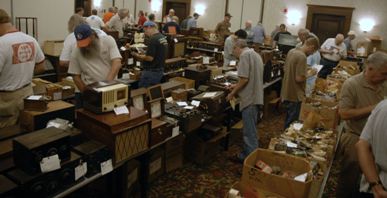 |
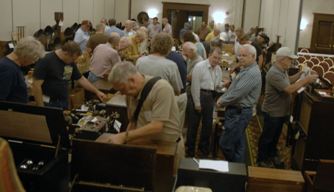 |
|
This year
there were two auctions. The first, the one
pictured here, was the Larry Babcock estate auction.
Larry Babcock was a noted collector
and author.
Highlights, or more accurately, things that interested
me, are shown below. |
|
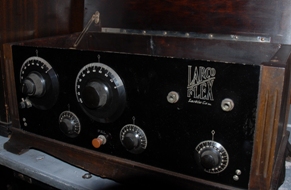 |
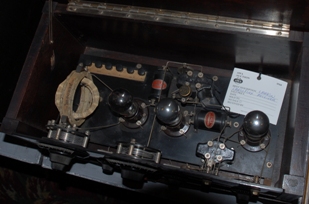 |
| This LarcoFlex by the Larkin Company was
by no means the rarest or most sophisticated receiver in
the auction, but it caught my fancy. |
This photo
shows why. Check out the variocoupler and
condenser
one the left,
and in the picture below. |
|
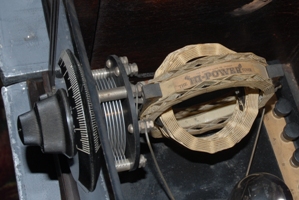 |
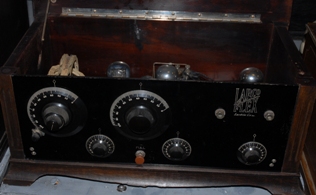 |
| The LarcoFlex uses an elegant
variocoupler, a "Hi-Power" tuner made by Barnett-Lloyd
Company of Chicago, that's coaxial with the variable
capacitor. That's sweet. |
|
|
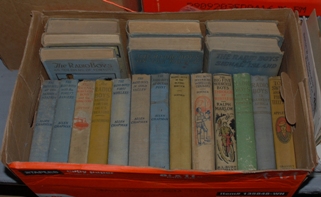 |
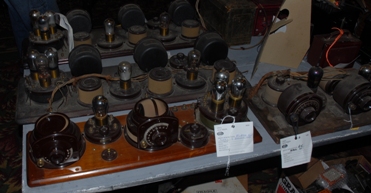 |
| What would an AWA auction be without a
box full of Radio Boys novels.... |
...and a table full of Atwater Kent receivers? |
|
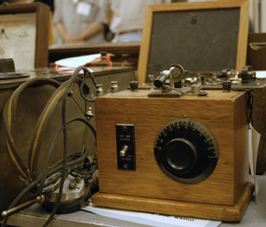 |
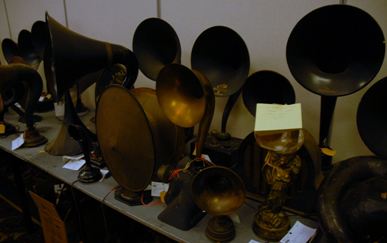 |
| One of my special interests is crystal
radio sets. This is an Aduiola in a
beautifully-finished natural wood cabinet. |
The horn section.... |
|
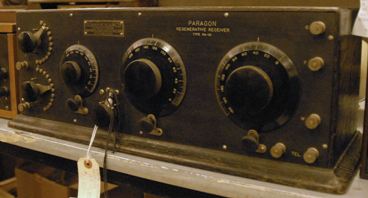 |
This receiver to the left is the famous Adams-Morgan
Paragon regenerative receiver, type RA-10. It was
designed by "Paragon Paul" Godley. This model was
used in the successful 1921 transatlantic tests where U.
S. amateur signals were first heard in Europe, in this
case by Godley, dispatched for the task by the ARRL and
situated in cold, rainy, Ardrossan, Scotland.
Godley used both a superhet as well as the RA-10, and
Adams-Morgan capitalized on the event in advertising for
this radio. The "Morgan" portion of Adams-Morgan
is none other than Alfred Powell Morgan, more noted as a
prolific author than as a radio manufacturer. My
story about Morgan is
here. |
| This rig to the right and below was
intriguing. I thought it was a crystal set but
when it came up for auction, it was announced as a wave
meter. I'm not so sure and would like someone to
correct me on this. In any event, the item came
from the USS Schenk destroyer and came complete
with calibration curves performed in the U. S. Navy
Yard, New York, on December 7, 1920. |
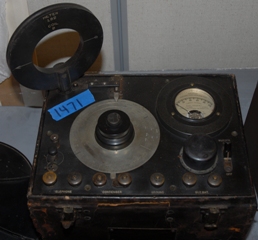 |
|
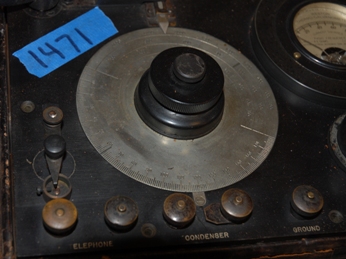 |
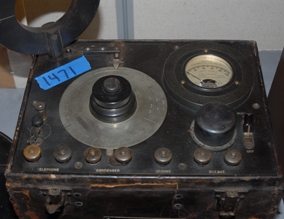 |
|
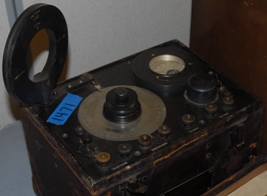 |
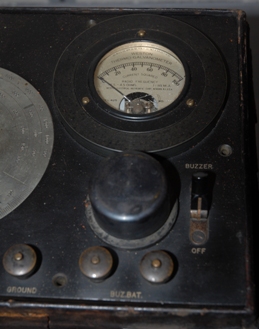 |
| The Antique
Wireless Association Museum |
|
| The AWA Conference is held at the Rochester
Institute of Technology Inn & Conference Center but
the AWA Museum is not far away, in Bloomfield.
In the photo to the right, curator Ron Roach, W2FUI,
is demonstrating one of the two operational spark
gap transmitters. The museum is spectacular
and is a must-see for anyone traveling in the
Rochester area. |
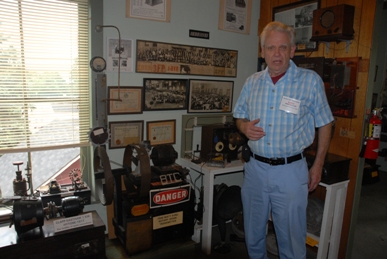 |
|
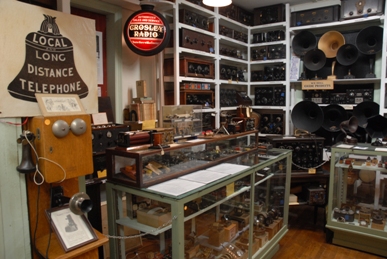 |
 |
|
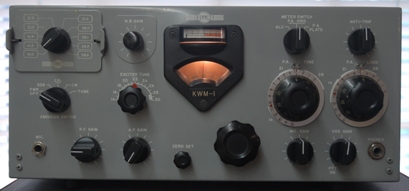 |
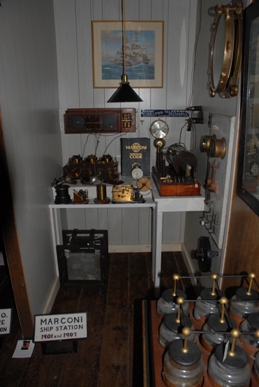 |
|
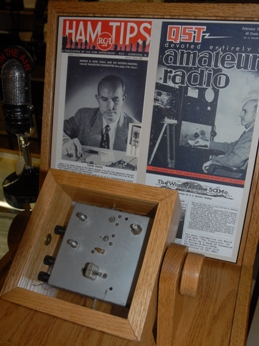 |
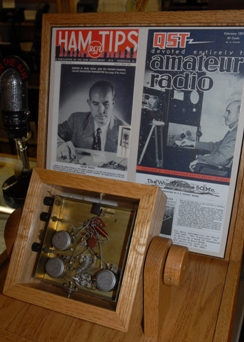 |
| Wow! Here is the first known
transistorized U. S. ham band transmitter, in this
case, for two-meters. This was made by George
M. Rose, K2AH. The issue of RCA Ham Tips
in the background may be found
here.
It's the January - March 1953 issue. Below are
more detailed shots. |
|
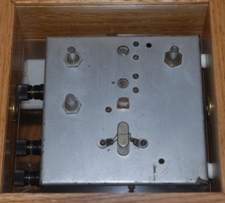 |
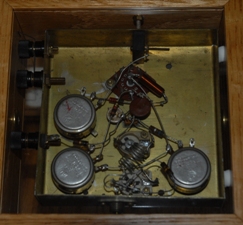 |
| The Flea
Market |
|
|
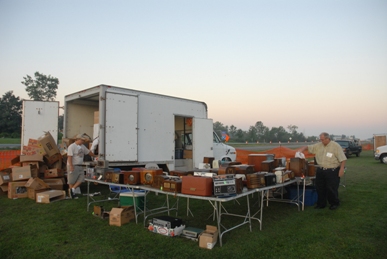 |
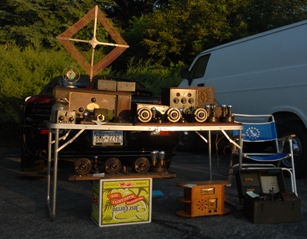 |
|
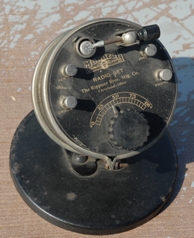 |
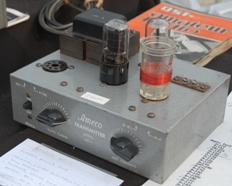 |
| The Rippner Brothers Manufacturing Company
of Cleveland, Ohio made this compact crystal
radio set. The logo is "Monarch
Automotive Accessories." |
Joseph Long, WA2EJT, had this Ameco AC-1 for
sale in the flea market with an asking price of
$250. This could well have been one of the
most modern radios up for sale in the flea
market! |
| The
Competition |
|
|
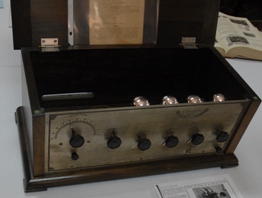 |
Left and below: Gary Alley took home a third-place
ribbon for this beautiful Faraway "Improved" model F
4-tube TRF receiver. |
|
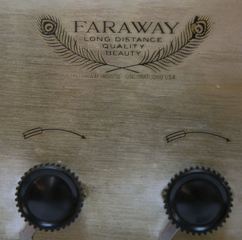 |
 |
| I probably should have noted more detail
on this 2-tube receiver to the right, and below, but I
was captivated by the variable capacitor. |
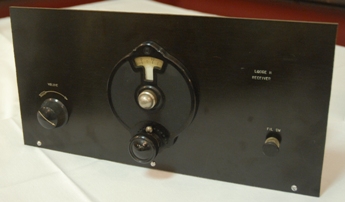 |
|
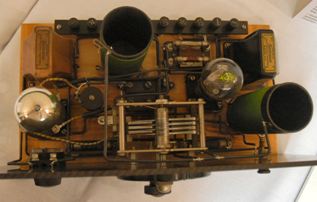 |
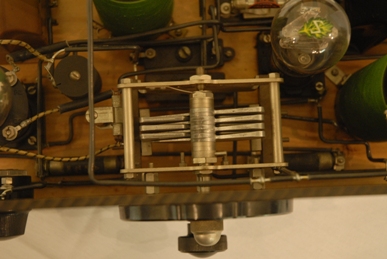 |
|
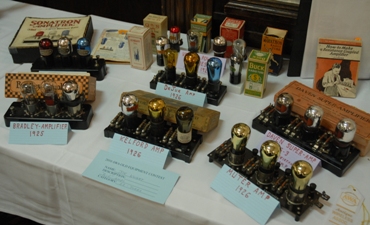 |
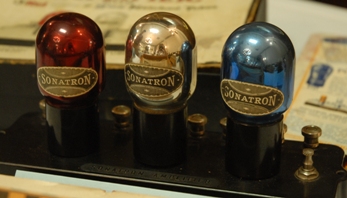 |
| Joe Knight won a third-place ribbon for
this spectacular collection of R-C Amps including the
Sonatron Amplifier "with Red, Silver, and Blue Matched
Tubes." |
|
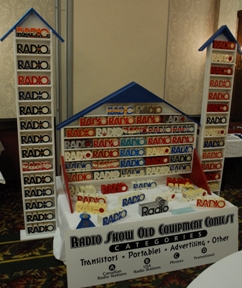 |
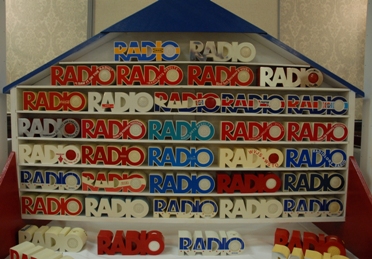 |
| The first-place blue ribbon was won by
John DeLoria for a most unusual collection of RADIO
radios. |
|
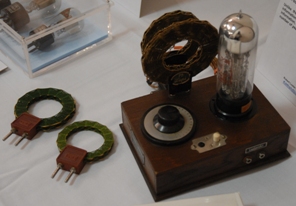 |
The one-tube Loewe OE-333 receiver submitted by
Robert Lozier was fascinating for several reasons.
First, it's just elegantly designed. Next, the 3NF
vacuum tube holds inside of it several resistors and
capacitors. According to Lozier's notes, this gave
superior performance due to the reduced stray
capacitance that would have occurred with external
components. Finally, I liked the simple coupling
of the primary and secondary inductors: just a simple
hinge. |
|
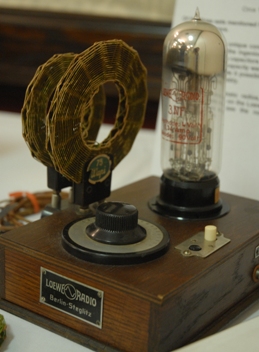 |
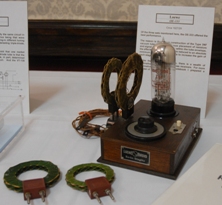 |
|
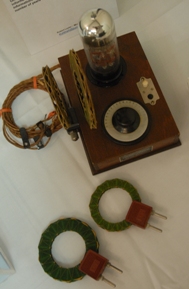 |
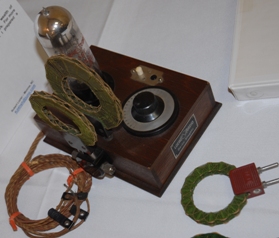 |
|
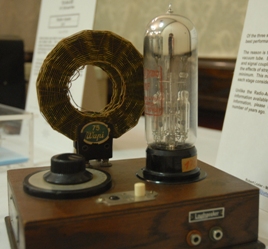 |
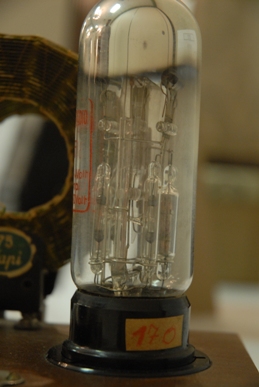 |
|
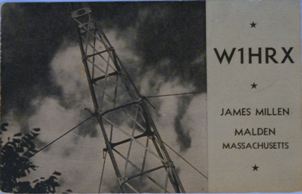 |
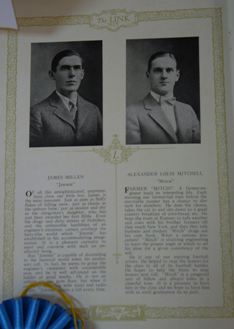 |
| My hero: James Millen. This
collection of Millen memorabilia won a blue ribbon.
It includes Millen's page from his 1925 Stevens
Institute of Technology yearbook, "The Link." |
|
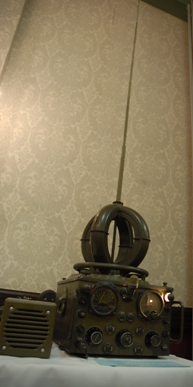 |
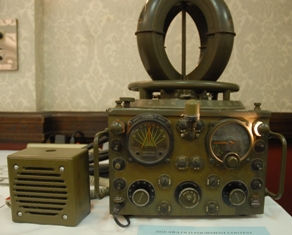
|
| In the photographs above and below, Joe
Long, WA2EJT, had this cool World War II crossed-loop
direction-finding set, BC-973. It appeared to be
in mint condition and was operational. |
|
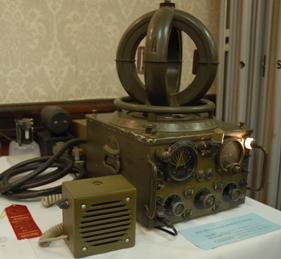 |
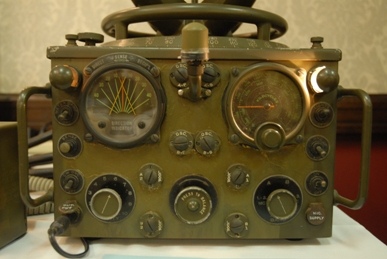 |
|
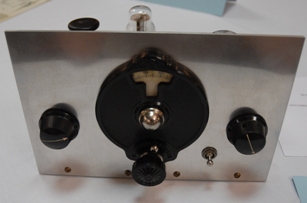 |
Louis Vermond, VE3AWA / VE3BDV, built this (left and
below) outstanding 80-meter receiver from plans in the
1933 edition of How to Become a Radio Amateur.
The workmanship is breath-taking. It's a two-tube
regenerative receiver using a type 30 detector and a
type 33 audio amplifiier. It won a second-place
ribbon. |
|
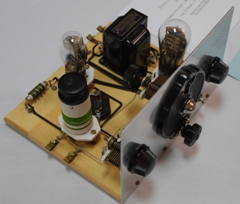 |
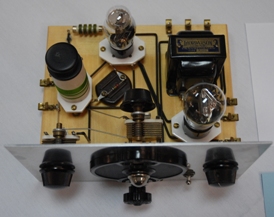 |
|
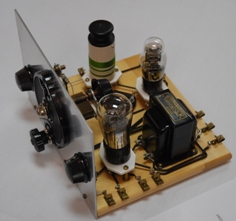 |
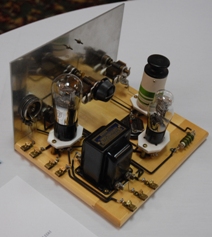 |
| The first-place blue ribbon for
Electronic Television went to Geoffrey Bourne for this
Pilot Radio TV-37 set with a 3-inch screen. |
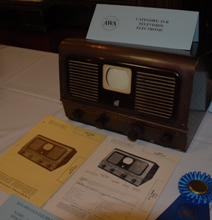 |
|
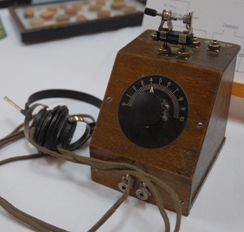 |
This elegantly designed 1923 Telefunken crystal
radio set garnered a blue ribbon for Benet Svensson.
|
|
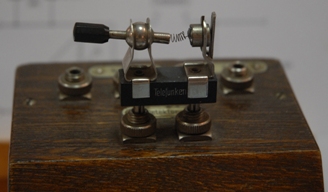 |
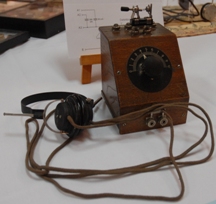 |
|
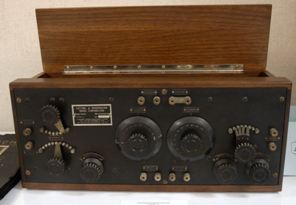 |
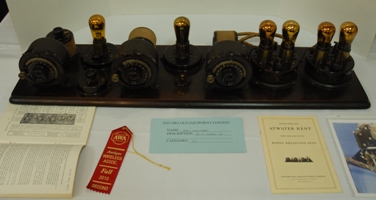 |
| One of the themes of the convention and
category of competition was Sylvania and its history.
This sophisticated broadcast receiver was manufactured
by Cutting & Washington Radio Corporation, one of the
firms that eventually evolved into Sylvania. This
radio won a first-place blue ribbon for John Terrey. |
Ken Lowther's beautifully restored Atwater Kent
receiver won a second-place ribbon. Part of the
attraction of these first-generation manufactured
receivers was the technology itself. So it was
beautifully displayed in breadboard fashion. |
|
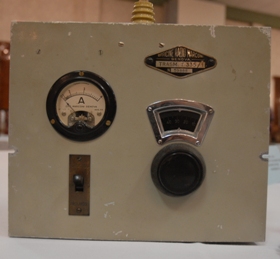 |
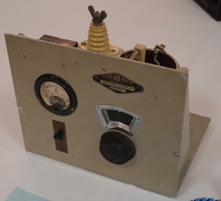 |
| Above and below are photographs of a
marvelously compact Officine Radio Marconi ship spark
transmitter. It won a first-place blue ribbon for
Geoffrey Bourne. |
|
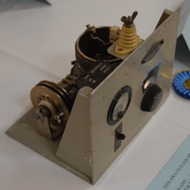 |
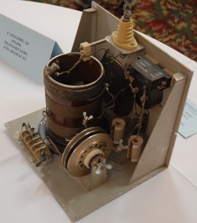 |
|
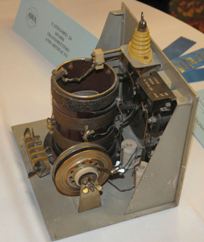 |
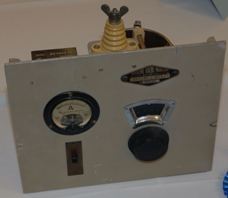 |
|
|